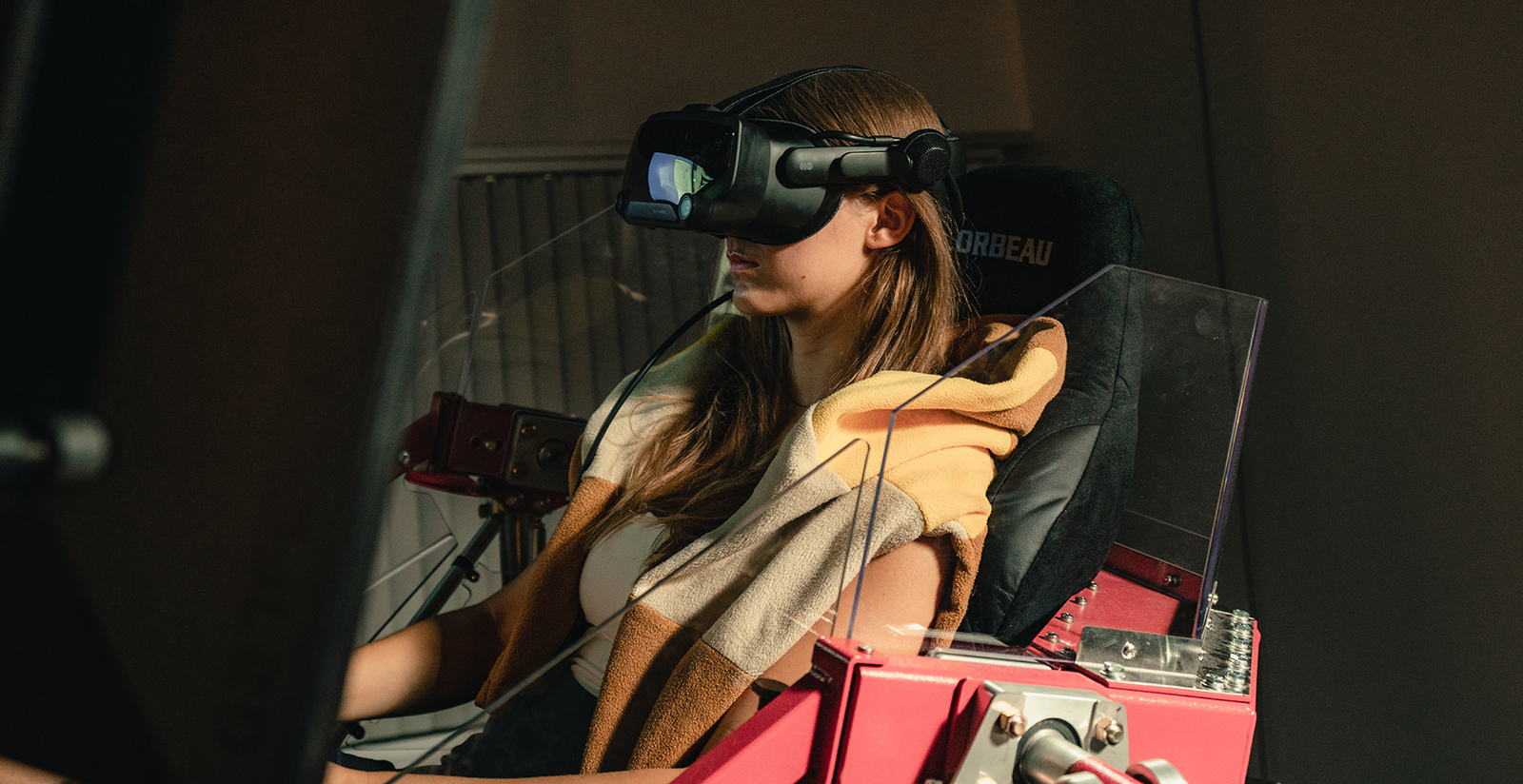A new simulator in Embry-Riddle’s College of Aviation’s Spatial Disorientation Lab is helping pilots encounter illusions in a safe environment to prevent fatal aircraft accidents.
In the lab, flight student Nella Filipkova wears a virtual reality headset as the device she is seated in rapidly whirls around. She’s in a modified Force Dynamics 401cr Motion Simulator using the Virtual Reality Aviation Illusion Trainer developed by the Extended Reality Lab.
It almost looks like she’s strapped into an amusement park ride, but the new simulator is not meant for entertainment. Rather, it’s a life-saving training tool allowing pilots to realistically feel and react to simulations of dangerous flight conditions that can create disorienting illusions for pilots. These illusions can imitate, among other things, the feeling of turning, climbing or descending when their aircraft is actually flying perfectly straight or, worse, doing the opposite of what the pilot feels behind the controls.
Spatial disorientation illusions like these are some of the most common factors cited as contributing to fatal aircraft accidents, including the one that claimed the lives of Kobe Bryant and his daughter Gianna in 2020. That crash occurred in a helicopter, but the disorientation effects experienced by the pilot are the same as those suffered in airplanes.
Dr. Bob Thomas, an assistant professor of Aeronautical Science who heads up the Spatial Disorientation Lab, began student training and research using the new simulator in October. The device, which can rotate full 360-degree revolutions as well as 30 degrees of pitch and bank, simulates vestibular system illusions related to the inner ear, which can cause dizziness, disorientation, motion sickness and illusions like the “Graveyard Spiral,” a dangerous spiral dive entered into accidentally by a pilot. It also includes visual illusions, like false horizons and runway width illusions.
The trainer includes a dozen illusion scenarios that students experience through the VR headset. The scenario involves students flying in a Cessna and moving on a recorded path through each illusion, which lasts about five minutes.
“We all learn about these illusions. However, it is hard to imagine how it feels and the effect it has on your perception,” says Filipkova.
“It is chilling to imagine that you can unknowingly experience spatial disorientation in flight. For this reason, everyone should take advantage of the simulator, so they have an idea of what to expect and can correctly identify the illusion were they ever to encounter one.”
